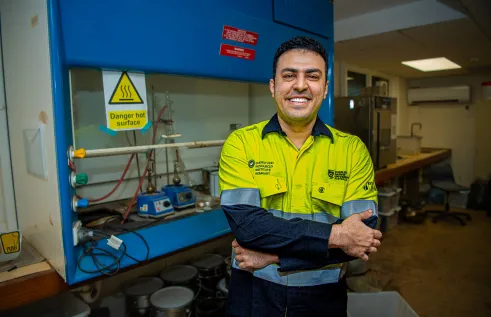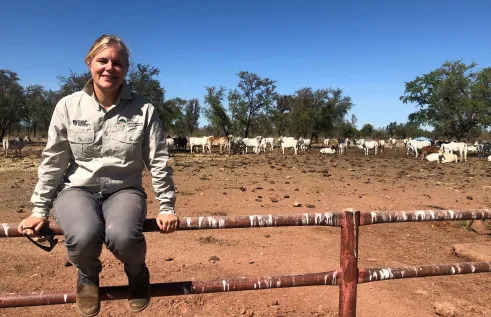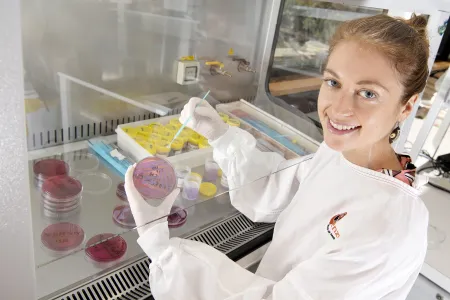News Article
Melioidosis research traces source to reduce spread
Research by a Charles Darwin University PhD graduate, who tracked the source of the melioidosis-causing bacterium, could help develop future public health measures in communities prone to infection.
The research through the Menzies School of Health Research by the newly graduated Dr Audrey Rachlin focused on the environmental bacterium Burkholderia pseudomallei, which causes melioidosis.
Dr Rachlin said the tropical infection was endemic in Northern Australia and Southeast Asia with 38 confirmed cases in the Northern Territory this year so far.
Originally from the USA, Dr Rachlin began working on melioidosis during her Masters research project with the London School of Hygiene and Tropical Medicine, where she travelled to Laos in Southeast Asia to study the infection.
“During my time in Laos I saw many melioidosis patients first-hand and became aware of the heavy burden of disease and high rate of mortality there, which has been as high as 40-50% of patients in the past,” she said.
Inspired to continue her research, she decided to enrol in a PhD with CDU and work with Menzies, who are renowned globally for melioidosis research.
“The aim of my PhD research was to examine soil and surface run-off in Darwin, Northern Australia and Vientiane, Laos, which are two urban endemic settings, to examine the distribution and local spread of B. pseudomallei,” she said.
“Using whole-genome sequencing I was able to demonstrate that some molecular types are more widespread and established in the environment, while others are highly spatially clustered over a small geographic area.
“The high rate of detection and diversity at drain sites in Darwin and Laos also suggested that drains likely play a role in dispersal of B. pseudomallei in the environment, particularly during periods of heavy rainfall.”
She said that improved awareness of the local population structure of the bacterium in Darwin has also enabled the successful investigation of two melioidosis case clusters in captive zoo animals.
“Knowledge gained from my research will allow for better understanding of B. pseudomallei phylogeography and source attribution, which may help to develop future public health measures throughout endemic areas,” Dr Rachlin said.
Since completing her studies, Dr Rachlin has been working as a research officer in the melioidosis team at Menzies, along with other epidemiology and public health projects.
“Completing my PhD has been both rewarding and empowering and I feel as though I have contributed something significant to melioidosis research and this sector of public health,” she said.
“I hope to continue working in the global public health and infectious disease epidemiology sectors in the future.”
Related Articles

Where rubber meets the road: Old tyres are key to building tougher roads
Almost half of the Northern Territory’s worn-out tyres end up in landfills – with the rest exported interstate for recycling – but a study led by Charles Darwin University (CDU) is repurposing the discarded rubber to build stronger, sustainable roads that meet the NT’s unique needs.
Read more about Where rubber meets the road: Old tyres are key to building tougher roads
Social media subjecting Black women to radicalised digital policing
Influencers use oppression, manipulation and weaponisation to police Black women on social media, according to new research uncovering the entrenched nature of digital racism.
Read more about Social media subjecting Black women to radicalised digital policing
Moo-ving the boundaries: New research evaluates virtual fences for use on NT cattle stations
Cattle producers in Northern Australia face unique challenges when adapting tools like virtual fences on their properties, but new research from Charles Darwin University (CDU) is set to break down the barriers to this technology.
Read more about Moo-ving the boundaries: New research evaluates virtual fences for use on NT cattle stations
